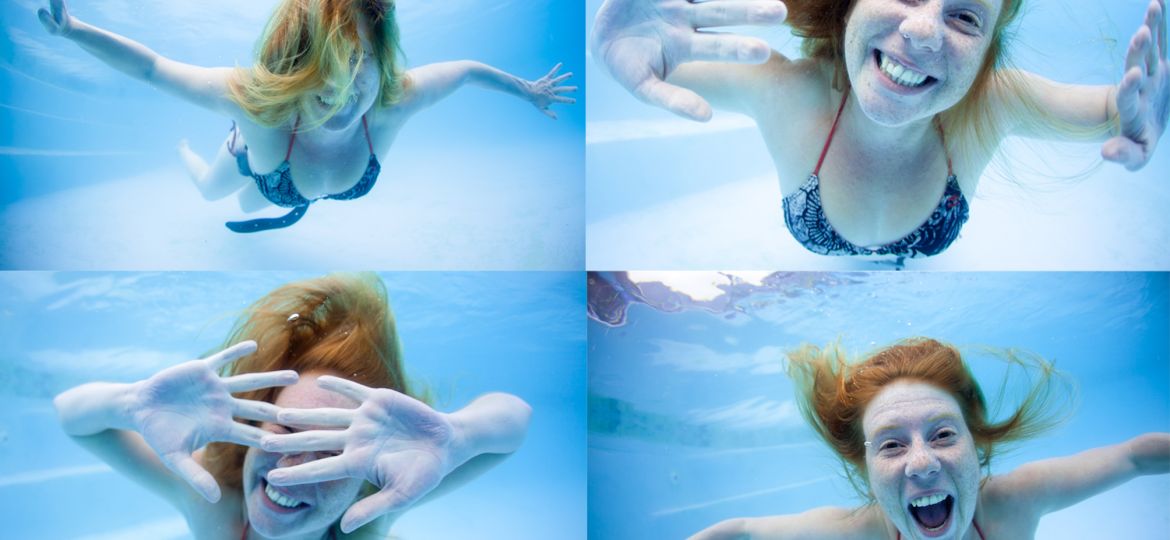
My underwater camera kit used to change regularly but I think I have honed it down now to items that I love and it’s going to be a while until I part with them, I hope. I am often asked what I use underwater so here it is….
Camera Body
Over the years I have used various Nikon camera bodies as they became available — from the Nikonos V to the Nikon F100 to the D100 to the D200 and D300 to my current favorite, the D800 full-frame body. I ventured over to Canon for a while as I teach and I needed to know how to use them. I used a 5 D Mark2 for a few years. I am firmly back with Nikon for now. The menu system of the Nikon makes more sense to me and I love the focus system too. I still own and use the cropped-sensor cameras like the D200, too, because there are lots of things they do better and many lenses they work better with.Lately I have also been experimenting mirror less cameras and specifically the Olympus’ two-times crop. The small size is helpful when diving with fast moving pelagics and when trying to get a macro shot in a small hole. The Olympus OM-D has such high image quality that I feel I’m not compromising on the final photograph. There has been a remarkable enhancement in high-ISO performance in recent years, which has transformed what we can do in deep, dark places.
What should I buy?
- Get the best you can afford but first decide if you want to go for a smaller portable kit or whether you want to continue with the sturdy and incredible dSLR’s such as the D4 or D800 or similar. If you travel a lot and portability is essential for you then mirror less makes a lot of sense.
- If you decide to go mirror less then you could also try to find a good old second hand dSLR such as the Nikon D200 or the canon 5D mark 2. Use this in your home country when travelling in your car and weight doesn’t matter, or as your back up.
Housing
In my underwater camera kit I have various Nikon and Canon housings from Sea&Sea and Ikelite all of which have been sturdy and worked hard for me with few problems. There are all now being used in my school and internship program. My current housing is definitely my favourite and that is the Nauticam NA-D800 for the Nikon D800. The ergonomics are incredible and the multi-selector mimics the camera’s multi-selector exactly, which is helpful. I also purchased a vacuum system and so I feel far more relaxed when diving with such an expensive camera- I highly recommend going this route if you are thinking of a Nauticam.
What should I buy?
If you can afford to then I suggest Nauticam. If you live in South Africa then the after sales service from Dive Action in Cape Town is amazing and makes a huge difference.If money is an issue there are some great second hand deals on the Internet. You need to get on Google or ask my assistance! I charge a commission but I am prepared to source second hand gear that I will first test before you pay.
Strobes
Over the years I have used various strobes from Sea&Seas various ranges through to Inon Z240’s.In my underwater camera kit I am currently using the Ikelite Substrobes 161 and 125. I recommend this route due to the fact that the battery packs are rechargeable. I will never go back to charging hundreds of AA batteries again. AA’s also need to be replaced regularly. The charge on these strobes holds very well and I often only have to charge them up every fourth or fifth day even if I am diving 2 or 3 times a day.There is a recent move to continuous LED lighting. I have not yet tried this out but in 2017 I intend to.I run my strobes hard wired with sync cables but I know some photographers who prefer the fiber optic route. There are pros and cons for both that are easy to find on the Internet and so I suggest researching that.
What should I buy?
Strobes are vital but also very expensive. Good second hand strobes are hard to find. This is a bit of a conundrum. I suggest you save to buy the best you can.In my underwater camera kit I love the Ikelite Substrobes as I can turn them down to just a kiss of light or have them on full blast. Also, after care service from agents M-Photo in Cape Town is brilliant. Most importantly to me is the fact that I can recharge the battery pack and don’t need to have separate chargers and AA batteries.
Lens
I use mostly fixed focal length lenses underwater and I recommend you do the same. It makes lighting a lot simpler.
What should I buy?
I recommend that you start off with the easier lenses if you are using a dSLR. For wide angle any fish eye lens is easy to work with underwater. If you don’t want a fish eye (which doesn’t have that extreme bulgy look underwater B.T.W) then opt for the older 20 mm lens. For macro the 60 mm is the easiest and most versatile. The 100 or 105mm macro lenses are also wonderful but usually take more experience to use underwater successfully.
recent posts
Ports
I use glass ports for the most clarity in a shot. However, when you start out it is a better idea to use acrylic. The reason for this is threefold:
- They are cheaper;
- If you scratch them then the water fills in the fine lines;
- If you scratch them repeatedly you can eventually ‘rub’ out the scratches using a cleaning kit.
What should I buy?
Acrylic
Accessories
I subscribe to K.I.S.S (Keep it simple stupid)! In the beginning it takes a lot of time and effort to get used to all your gear so forget about accessories.
What should I buy?
- Apart from the usual cleaning stuff the only accessory I use regularly is an air gun that I attach to my HP hose. This is vital to get rid of dust and water droplets where necessary. It’s al lot cheaper than buying compressed air in cans.
- Invest in a good padded bag that you can also take on the boat. It must have a thick plastic zip. This will protect your gear while travelling.
- You must have a protector for your ports.

Blogger: Fiona Ayerst
Fiona is an award winning professional underwater and environmental photojournalist. Her work is published and portrayed throughout the world in numerous magazines, blogs and sites. Between May and October annual, Fiona manages Africa Media’s environmental and travel journalism internship program.
subscribe
receive my missives direct to your inbox


